Santander Universities
International Exchange Mobility Award
Medieval Studies Research Centre
School of History and Heritage
University of Lincoln
Coordinated by Dr Graham Barrett
Julio Escalona Monge
Consejo Superior de Investigaciones Científicas (Madrid)

Workshop
Body and Soul: Monastic Networks and the Laity in the County of Castile (10th c.)
10am-12pm, 27 April 2017, MC 0024
For an historian of medieval Iberia, Lincoln is quickly turning into a must-go location! In recent times several young scholars have gradually converged in the University of Lincoln’s Medieval Studies Research Centre to constitute what is bound to be one of the most significant clusters of Anglophone specialists in this field for the coming years. It was then a great pleasure to be invited to visit Lincoln with the financial support of the Santander Universities programme, which I did between the 25th and the 28th of April 2017.
Besides enjoying the medieval beauty of Lincoln’s old town, and the all-time hospitality of English weather – from sleet to sunshine, to sleet again – at the core of this visit were two academic activities. The first was a workshop for undergraduate and graduate students entitled ‘Body and Soul: Monastic Networks and the Laity in the County of Castile (10th c.)’. For two hours we discussed traditiones corporis et animae, a particularly abundant type of charter in tenth-century Castile by which one or more individuals give themselves to a monastic house, along with some property. By carefully de-constructing some examples, and through quantitative analysis of the charter corpus, we could establish that such operations involved primarily non-aristocratic actors who sought a favourable relationship with the monastery of their choice. However, an exploration of the court cases in which such deeds often ended up, and of the ambiguous ways in which the transferred properties were identified, reveals that, despite their individualistic appearance, the traditiones corporis et animae actually connected – willingly or otherwise – whole kin groups to the monasteries. Monasteries acted like hubs for locally intricate social networks which spread beneath the more visible layers of aristocratic patronage and alliances.
Lecture
Spain, Feudalism, and the European Union
5-6:30pm, 27 April 2017, DCB 1102

The second event was a lecture aimed at a wider audience, entitled ‘Spain, Feudalism, and the European Union’. This was a critical reflection on the links between contemporary events and historiographical developments in Iberia over the 20th century, but mostly after the death of the dictator Francisco Franco in 1975. I started from the identification by Cambridge historian Peter Linehan of a dramatic U-turn among Spanish medievalists of the 1980s, who swiftly disregarded the inherited notion that all of Spain (except Frankish-driven Catalonia) had stayed clear of the feudalism which dominated the rest of the continent and deemed medieval Iberia as feudal as any of its contemporary neighbours. Linehan lucidly saw this as a reflection of Spain’s urge to join the European Union and stop ‘being different’ as per the immensely successful slogan promoted by the late Franco-period tourism authorities. My aim, almost 25 years later, was to put those observations in context, by showing that the pro-feudal trend was actually twofold. One strand brought on board the influence of the French ‘Annales School’, mainly through the works of Marc Bloch and Georges Duby, while the other derived from Marxist historiography, itself a most sensitive development in Spanish academia as a turbulent 20th century approached its end. I sought to connect Spanish scholarly debates with political attitudes, but also to frame them within the more general shift from a French historiography which dominated the central decades of the 20th century to the global hegemony of Anglophone scholarship. This change did away with feudalism as an identity marker of the European Middle Ages, but had nothing to substitute for it. The result is the present state of things, where the disciplinary identity of Medieval Studies seems to drift between obsolete (but utterly undead) views of the origins of nation-states, a never-too-well-defined European common identity, and a global history where medievalists are largely ‘naked and far from home’.

Both events went extremely well. I was very impressed by Lincoln’s young students, who, never put off by the ‘exotic’ looks of Latin Iberian charters, fully engaged in the discussion of the underlying social processes. Similarly, the strong political implications of recent Spanish historiographical developments were debated enthusiastically by the participants. Having known colleagues like Graham Barrett, Robert Portass, Antonella Liuzzo Scorpo, and Jamie Wood for quite a while, it was hardly surprising that our talks on the Iberian Middle Ages over these days were the most enjoyable part of this visit’s informal face. However, the most important outcome was our realization that the link between Lincoln’s Centre and Spain’s CSIC should become formalized in a stable way, and we decided to explore the funding programmes that could make it possible in the near future.

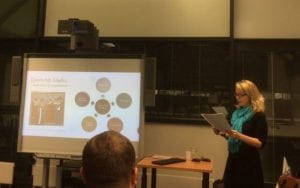
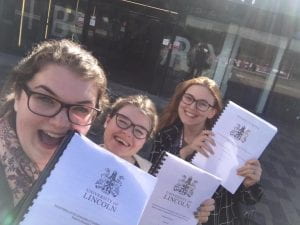





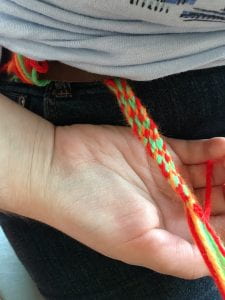
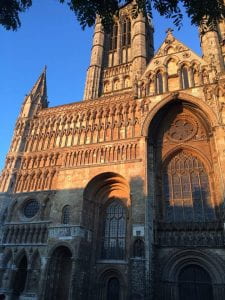
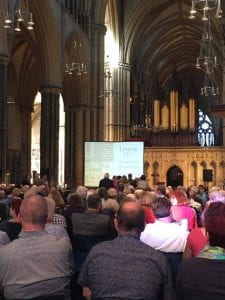
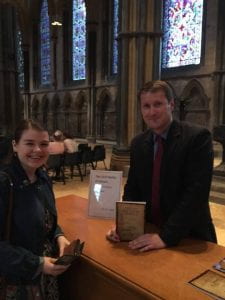
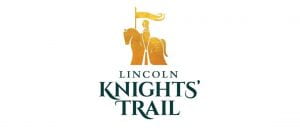
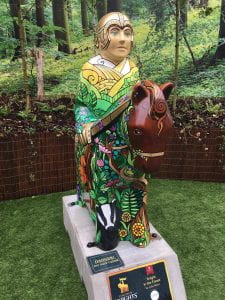




 fascinating and made me think about the logistics of preserving history for future generations, not just in war zones (although, as Professor Stone suggests, this is important) but at local levels too. Many of the MA students in attendance at this seminar, myself included, are particularly interested in making ‘ordinary’ people aware that our culture heritage is everywhere and deserves to be protected. So, while his presentation was not directly focused on medieval history, Professor Stone raised some highly important points concerning the protection of cultural property.
fascinating and made me think about the logistics of preserving history for future generations, not just in war zones (although, as Professor Stone suggests, this is important) but at local levels too. Many of the MA students in attendance at this seminar, myself included, are particularly interested in making ‘ordinary’ people aware that our culture heritage is everywhere and deserves to be protected. So, while his presentation was not directly focused on medieval history, Professor Stone raised some highly important points concerning the protection of cultural property.
